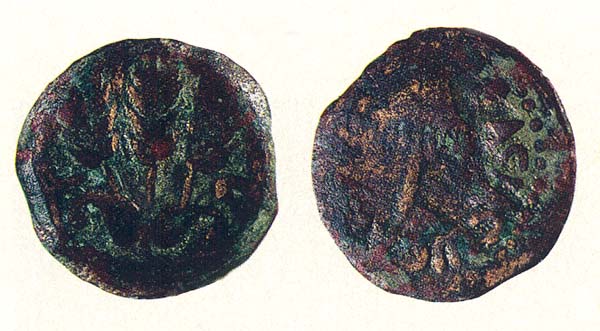Image Details

Garo Nalbandian
Styx and bones. A bronze coin minted in 42/43 C.E. during the reign of Herod Agrippa I, proved to be yet another significant find in the Caiaphas burial chamber. Discovered inside the skull of an adult woman interred in an ossuary marked “Miriam, daughter of Simon,” the coin is the first known example of a pagan custom practiced at a Jewish burial in Jerusalem, although a similar case was found in a tomb near Jericho. The coin may represent payment to the Greek god Charon in exchange for safe passage for the deceased’s spirit across the River Styx—or some version of this custom.
This coin was apparently placed, in accordance with the custom of the Greeks, in the mouth of the deceased; coins could also be placed in the deceased’s hand or elsewhere in the tomb. Zvi Greenhut, the excavator of the Caiaphas tomb believes that all coins found in Jewish tombs from the Second Temple period, whether found in direct connection to the buried body or not, must be considered related to this burial custom.
